Philodendron Mamei is an amazingly low-maintenance, classic heart-shaped Philodendron, making it a perfect choice as houseplant for beginners and those struggling to keep their plants alive. Well, we all plant parents appreciate plants that are not demanding and easy to care for. Don’t we? This lovely evergreen creeping Philodendron features heart-shaped green leaves with stunning silver markings, distinguishing it from other indoor plant collections.

With the rising popularity of variegated houseplants, Philodendron Mamei heart-shaped foliage, with its significant silver/gray mottled variegation, offers the equivalent aesthetically pleasing experience but with zero fuss, unlike other popular variegated varieties with the constant fear of variegation fading away.
This exceptional plant with air-cleaning properties makes it the perfect choice for any indoor place. The striking silver variegation on the leaves, which look like hand-painted streaks, makes it appealing and eye catching.
Closely-Related Allied Species: Philodendron Moonlight, Philodendron White Knight, Philodendron White Princess, Philodendron Florida Ghost, Philodendron Verrucosum, Philodendron Squamiferum.
Essential Products
Origin and Family
Philodendron Mamei is a terrestrial plant (crawling) of the Araceae family and is native to the tropical regions of South and Central America- was discovered in Ecuador’s rainforests during the late 1800s.
This striking terrestrial Philodendron is also popular by other names such as Silver Cloud ( a hybrid of Philodendron Mamei) and Quilted Silver leaf plant due to its silver lining in the leaves.
| Botanical Name: | Philodendron Mamei |
| Family Name: | Araceae |
| Other names: | Silver Cloud |
| Plant Type: | Crawling perennial |
| Origin: | Ecuador |
| Color: | Dark green with silver Variegation |
| Leaf Shape | Heart-shaped leaves |
| Humidity: | 50% to 70% |
| Temperature: | 65°F to 80°F (18°C to 27°C) |
| Light Need | Bright Indirect light |
| Propagation | Stem cutting |
| Soil type | Well-drained organic soil |
| Hardiness Zone | Zone 9 to 11 |
| Pests | Mealybugs and Scale insects. |
Is Philodendron Mamei the same as Silver cloud?
Philodendron Mamei and Silver Cloud are different plants of the same species that are almost identical and hard to differentiate unless you put them side by side. Silver Cloud is probably a Mamei hybrid, but I could be wrong. The main difference is the leaf shape, amount of silver variegation & the ridges.
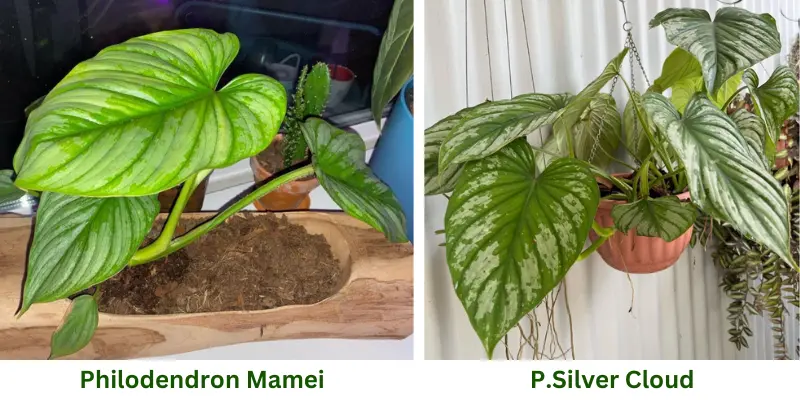
Philodendron Mamei has elongated heart-shaped pointier leaves, while silver cloud has more rounded heart-shaped leaves. The second difference is the colour of new growth, so in Philodendron Silver Cloud the cataphylls are white while for Philodendron Mamei they are red.
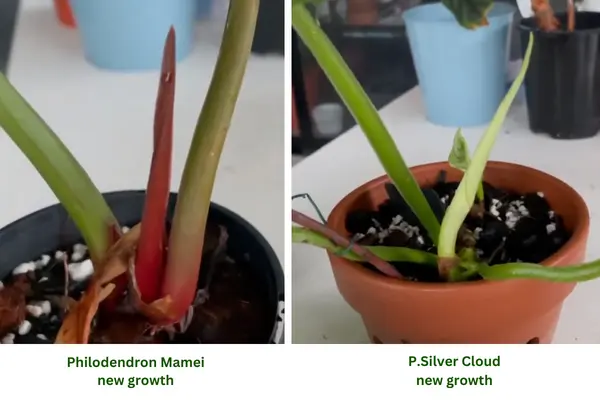
Another difference is the colour of the leaf base, the Philodendron Mamei leaf base is more prominently pink compared to Silver Cloud. As the name suggest Silver Cloud Philodendron has more silver variegation on the foliage compared to Philodendron Mamei.
However, the care and growth habits of both Philodendron is the same. Therefore, this guide will cover all the essential care tips of Philodendron Mamei and Silver Cloud.
How to Care for Philodendron Mamei?
The quilted silver is easy to grow and can thrive well with little care and attention. This wonderful beauty’s care requirements are no different from any other common houseplant.
Like most Aroids, it loves to stay in moist but well-draining soil and thrives in warm, humid tropical conditions. Also, this beautiful plant likes bright but indirect sunlight to throw out bigger variegated leaves.
This article will discuss every aspect of Philodendron Mamei care, including repotting, propagation, and common problems that your Philodendron Mamei may encounter! Keep reading to learn about the comprehensive care guide for this striking heart-shaped leafy houseplant.

How big do Philodendron Mamei get?
Philodendron Mamei features huge, heart-shaped dark green leaves with ridges contrasting gorgeous silver speckles along the surface, resembling smearings or smudging silver paint on the leaves exhibiting picturesque variegated foliage.
The leaves are soft and glossy that can get really, really massive, with a tiny bit of pink at the end of the ruffled-edged petiole right in the middle at the leaf base and deep, prominent veining resulting in a pleated appearance of the leaves.
Philodendron Mamei is a flowering plant that rarely blooms like the rest of the family members. Its inflorescences aren’t significantly beautiful as its foliage and are usually pale white spathe and spadix, resembling Peace Lily flowers that can be pollinated to produce seeds.
Is Philodendron Mamei a climber or crawler?
Philodendron Mamei is considered a terrestrial plant as these plants grow and crawl on the jungle floor in nature, acting as a ground cover, unlike epiphytic Philodendrons (Philodendron Verrucosum, Florida Ghost) that crawl up a tree.
However, they can be tamed to climb a moss pole, but I found them enjoying creeping and growing the roots along the surface of the potting medium producing significantly large leaves.
As Phlodendron Mamei or Philodendron Silver cloud prefers creeping, so I would suggest not giving it a moss pole; instead, giving it a pot that gives it enough room to actually just crawl along the surface of the potting medium e.g., a nice-looking rectangular self-watering pot. When the plant is deep in the pot, the new vines that come up will have very short internodes, and all these nodes will root well into the potting soil encouraging the plant to push up bigger and bigger leaves.
Is Philodendron Mamei a fast grower?
The evergreen beauty Philodendron Mamei is not a fast grower and can also climb if you provide it with sphagnum moss pole support. However, the plant may not produce huge leaves as it may produce as a crawler.

Temperature and Humidity
It’s not a surprise that the Mamei plant loves high humidity as it’s a tropical plant and thrives in a highly humid environment. Therefore, for the healthy and fast growth of the plant, a 50% to 70% moisture level is ideal, and in such humid conditions, the plant can produce vibrant, huge textured leaves.
You can obtain the desired level by placing a plant humidifier near the plant or using a pebble tray half filled with water and place the pot on top to increase the humidity. Another effective way to increase moisture naturally is to group the plants together. The plant leaves evaporate water droplets through a process of transpiration which increases the local humidity level around the plants. Moreover, you can place your plant in the bathroom or kitchen where it is more humid.
Temperature
This tropical perennial loves a warm environment and prefers a temperature range between 68F to 80F. It can tolerate the low temperature to some extent, but if it drops below 55F, it can affect the plant’s health. That’s why you always try keeping the plant in warmer areas where it can grow well and maintain its health.
This plant cannot withstand cold or frosty weather; please avoid cold drafts and sudden temperature fluctuations as the frigid environment is more detrimental to your plant. Bring this plant indoors in the fall when the temperature drops below 50F at night. Moreover, using heating pads and frost blankets during winter helps maintaining the optimal temperature.
If you notice that your Philodendron Mamei or Silver Cloud shows no new growth in months, it is most likely your plant is in a spot that is too chilly. You can use mulch, straw or dried grass for chilly places to cover the soil beneath the plant. It will act as insulation, preventing the heat from escaping to prevent stunted growth.

Watering
Appropriate watering is essential for the philodendron Mamei’s healthy growth. This houseplant variety loves moist soil but prefers to avoid soggy and waterlogged soil, as it can result in several problems. I would suggest watering your Mamei when bone dry, as I noticed if you water while the soil is moist, the leaves may show signs of yellowing.
This plant doesn’t favor wet soil and likes to be watered when the soil dries out completely. Thus, water it only when the top two inches of the soil is dry. If you notice lower leaves showing signs of yellowing, you might be over-watering the plant or need to move to a brighter spot.
Overwatering can cause various pest problems and diseases, such as root rot and stem rot. Whereas underwatering can also have devastating effects on the plant, and it can drive its slow growth and brown and curly leaf edges.
The Philodendron Mamei plant needs frequent watering in summer as the plant is exposed to bright indirect light for most of the day. In contrast, the frequency decreases in winter as the soil takes a long to dry due to lower temperatures and shorter days.
You might find online people suggesting watering the Philodendron Mamei weekly. However, this isn’t a practical approach as the watering needs vary depending on several factors, such as temperature and amount of light. Sticking to a schedule can cause trouble for the plant.
How to Determine soil Moisture?
Therefore, the best watering technique is to let the topsoil dry between the watering sessions. The ideal method to determine the dry soil is to dip fingers in it and check the moisture. Using a moisture meter or moisture sensor is quite helpful in examining soil desiccation if you are not sure. Once the top soil dries, water your plant thoroughly, and wait until the excess water drains out from the drainage holes to prevent any root rot or fungal disease.
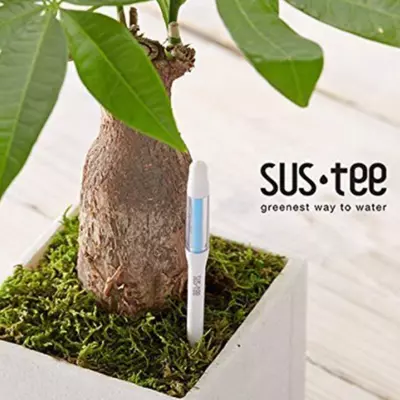
Bottom watering or using a self-watering pot for Philodendrons has been proven successful in my experience.

Light Needs
Being a tropical plant, the philodendron Mamei in its natural habitat, grows under tree canopies where it doesn’t receive direct sunlight. If you want your plant to flourish indoors, provide it with all native conditions and witness its wonders. The silver cloud loves bright indirect light; that’s why it needs constant indirect or filtered light for 7 to 8 hours a day. But avoid putting it in direct sunlight as it can cause irreversible damage to the plant foliage.
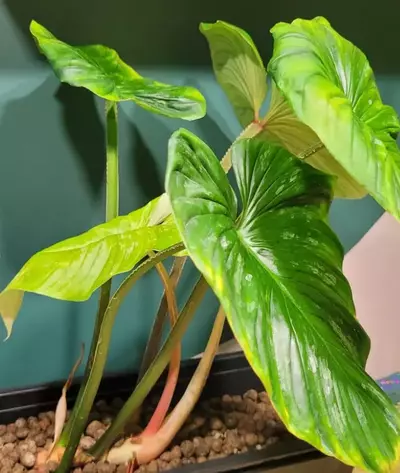
Mamei plants can’t tolerate direct sunlight, as their leaves scorch and turn yellow. Too much light can also cause result drooping leaves. If you plan to grow this plant outdoors, plant it under a tree or other shaded spots that receive dappled sunlight.
The perfect place for your Mamei plant would be an east-facing window or a glass door where your plant can receive gentle morning sun rays. If you place your plant in south or west-facing windows, use sheer curtains to filter intense direct light during the day that may burn the striking foliage.
If you notice tiny yellow or brown spots on the leaves, chances are the sunlight is intense for the foliage, and you need to move your plant a few feet away from the window.
Effects of low Light
On the other hand, if the plant does not receive sufficient light, its leaf edges may turn brown and plant will be leggy with smaller leaves and longer internodes. Although Mamei can tolerate low light conditions, too little light will slow the growth and result in smaller and narrow leaves. Also, the leaves can lose their silver dustings and turn to dark green color only.
Moreover, low light exposure means the plant will not photosynthesize efficiently and won’t absorb the soil’s complete water, which may cause root rot.
If you don’t have a bright spot at your place, using grow lights helps achieve the required light.

Soil Requirement
As your philodendron plant is very sensitive to overwatering but you cannot achieve the balanced watering if the soil is wrong. Most water sensitive plants prefer well-draining and aerated soil and so does philodendron mamei also enjoys airy and nutrient rich soil that helps in water drainage.
Avoid garden soil as it isn’t drain well, also regular potting mix can’t work for this pant as its made for outdoor plants. You need a potting medium for this philodendron that contains all the right materials in right proportions that allow the soil to drain well and also retain the required moisture for the plant development.
To achieve the required results, you can also make your own potting soil with all important ingredients. It’s an easy process and all you need is a
- House plant potting mix 25%
- Orchid bark 25%
- Perlite 25%
- Coco Coir or Peat Moss 15 %
- Worm castings 10% (add richness to the soil)
- Charcoal
Besides that, you can also choose from our recommended potting mixes available in the market, such as:

Fertilizing
Indoor plants also need fertilizer for extra nutrients and healthy growth, Philodendron Mamei isn’t different from other houseplants, but it’s also not a heavy feeder. The spring and summer months are the best time to feed the plant as it’s a growing season, and the Philodendron needs additional nutrients for its growth.
Feeding your plant with high nitrogen-based all-purpose liquid fertilizers diluted to half strength once a month is ideal in the growing season, while the fertilizer’s frequency should be reduced in the colder months.
Moreover, some plant parents prefer granular slow-release fertilizer as it is also very effective for its growth and reduce the chances of foliage and root burn. These granular fertilizers dissolves slowly as the plant needed, so you can’t over fertilize the plant.
If you are new to plant parenting I highly recommend trying Miracle-Grow Indoor Plant Food Spikes. These pellets are really easy to use and will not burn any foliage of your plant.
Here are some good fertilizers for your Mamei available on the market:
- Philodendron Plant Food, Indoor Plant Food Liquid Fertilizer
- Liqui-Dirt Nano Powder All-Purpose Organic Plant Food
- Osmocote Smart-Release Plant Food
Be careful with the usage, as over-fertilization may burn the plant.

Potting
Philodendron Mamei thrives in a pot container with drainage holes so air can flow through the roots to provide oxygen. Please avoid using large containers for your plant because, in big containers, the soil doesn’t dry and may stay soggy, increasing the risk of root rot.
As Philodendron Mamei and Silver Cloud are crawlers, therefore I would suggest using a nice long rectangle pot, preferably a self-watering container so the plant can crawl along the pot, and you can help bury most of the nodes in the potting mix to encourage enormous leaf growth.

Repotting Philodendron Mamei
The Philodendron Mamei is not a fast grower, loves to be root bound slightly, hence doesn’t need repotting often. The recommended time to repot the plant is once in one or two years, but you should only transplant it when you witness the signs such as root bulging out of drainage holes, the roots growing on the soil surface, or the plant has stunted growth despite care.
Another sign to look for in the case of Philodendron Mamei is when it starts to hang over the pot because it wants to crawl, you need to repot it into a bigger container so that it can crawl along the potting medium and can extend its aerial roots into the soil to absorb more nutrients.
The best time to transplant the plant is in spring or summer as it’s a growth season and may help to adjust the plant to a new place.
Repotting Guide
Here is a step-by-step guide to repot your Philodendron Mamei;

Philodendron Mamei Propagation
Since Philodendron Mamei and Silver Cloud are crawling philodendrons with lots of aerial roots and multiple growth points or nodes, they can easily be propagated via stem cuttings and air layering with 99% success rate.
Stem Cutting Propagation
I prefer stem-cutting propagation for this crawling philodendron as this is simple and has a high success rate. As the leaves are enormous, single-node cuts are just fine for propagation.
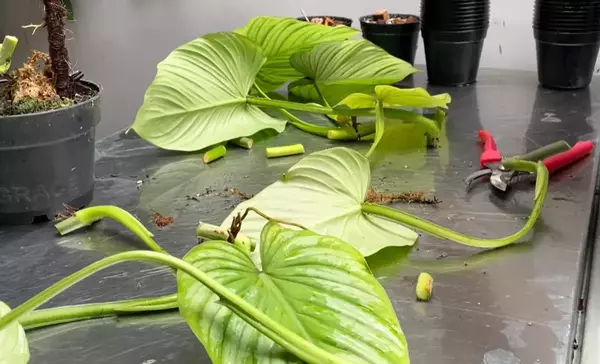
Follow a step-by-step guide for Philodendrons Mamei propagation via stem cutting.
Propagation in Water
For a cutting with very little roots, I usually put it in water because it does need to absorb more water to support the leaf and the new node from where new vine will appear.
Propagation in Sphagnum Moss and Potting soil
You can also use sphagnum moss and aroid potting mix for rooting your cuttings. I prefer using sphagnum moss for cuttings that have a little bit of roots and potting mix directly if they already have a lot of roots.
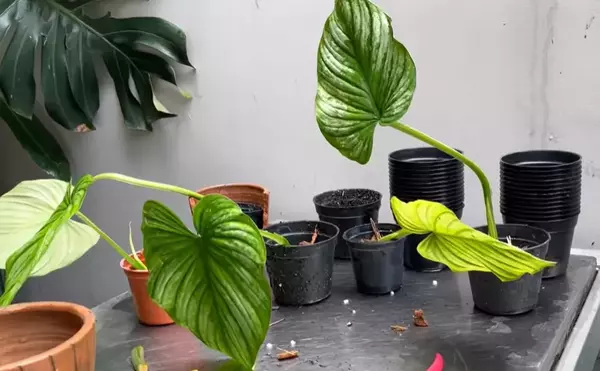
Before putting your cuttings in sphagnum moss or potting mix, you might need to seal the edge of your cutting by applying cinnamon powder, anti-fungal powder, or activated charcoal to prevent rotting.
Choose a small plastic pot, put the cutting in it, and cover the node with a little potting mix. You don’t want to bury the node too much in the potting mix as it will increase the incidence of over-watering. Therefore, only put like half a pot of potting mix, and when the new vine comes up, you can always add more potting soil later.
When you pot the cutting in potting mix, please ensure the growing eye is facing up so that the growth can find its way up and continue growing leaves facing up.
Air Layering Propagation
Philodendron Mamei grows aerial roots along its stem and can be propagated using air layering method. However, this is less common method but possible if you don’t want to cut your plant .

Pruning and Maintenance
Philodendron Mamei is not a fast grower; therefore, it doesn’t require frequent pruning. However occasional pruning encourages healthy growth by producing new leaves.
To encourage bushier growth, you can trim the infected, old, and damaged leaves. Always use disinfected shears for trimming to avoid the spread of any infections. As mentioned earlier, the plant has enormous leaves that quickly gather dust. It’s essential to clean the dust as it hinders transpiration and reduces photosynthesis; hence, clean the leaves regularly with a damp cloth. Regular cleaning also helps to keep an eye on potential pests and infections.
Moreover, you can propagate the cuttings and replant them in the pot to make the plant bushier.

Toxicity
You need to be very careful with this plant if you have children and pets at home. Philodendron mamei is poisonous to humans including cats and dogs as they contain calcium oxalate. This substance is responsible to cause several side effects in pets and human if it’s ingested. The expected symptoms are vomiting, swelling of mouth, GIT and esophagus. Keep it out of reach of kids and pets.

Diseases & Pests
Under proper growing conditions, this plant is resistant to pests, but it doesn’t mean it can never have any issues. It would be best to understand what common pests can attack your plant and how to prevent their occurrence.
Spider mites
Your silver cloud is more prone to spider mite attack if you are underwatering and keeping it in a low humid environment as these insects develop in dry conditions. The common symptoms of these mites are small brown or yellow dots on the leaves. Webbing on the leaves is another sign.
To prevent the spider mite infestation, provide your plant with the required humidity and water. In case of infestation, shower your plant to flush the mites from the leaves, and if that doesn’t help, apply insecticidal oil on the leaves.
You can also treat the leaves with a solution of one part isopropyl alcohol and four parts water. Continue spraying the leaves once a week for at least four weeks.
Scale insects
These tiny insects appear on the branches and stems of Philodendrons and are attached to those areas. They are harmful to the plant’s health and may cause by external factors such as dirty pots and contaminated potting mix.
To treat these insects, take a teaspoon of neem oil in 4 cups of water and spray it on the affected areas of the plant.
Cleaning leaves with a damp cloth every two weeks is very important to spot such issues.
Moreover, in case of spider mites and mealybugs attack, you can treat them with insecticidal soap spray.
Mealybugs
These tiny parasites can weaken and kill your plant by sucking the plant’s sap. The main causes of mealybugs are overwatering and over-fertilizing. If you see white, brown, or cream fuzzy stuff on the plant leaves, it indicates your plant is infested with mealybugs. To treat this issue, wipe the leaves and other parts of the plant with a cotton swab dipped in rubbing alcohol.
Don’t forget to check the underside of the leaves as Mealybugs love to cluster there and usually go unnoticed by plant parents.
Diseases
The plant is also susceptible to root rot due to roots’ suffocation because of overwatering and low light exposure. Let’s see what causes this disease and how we can overcome it.
Root rot
Root rot is a serious disease that can kill your plant. The root rot is caused because of overwatering and poor drainage of the pot. To avoid this problem, always use a container with enough drainage holes and well-draining potting soil, and don’t overwater the plant.
The common symptoms of root rot are yellow leaves and mushy roots. If your plant depicts these signs, remove it from the pot and examine its roots; if you see black and mushy roots, your philodendron is suffering from root rot.
Remove the affected parts and repot the plant in a fresh well, draining a chunky potting medium. Moreover, placing your plant in a spot where it receives bright indirect light for at least 6 to 8 hours helps it photosynthesize effectively and lets it absorb all the water from the soil.
Common Problems
The common problems that philodendron Mamei may encounter are
Brown leaf tips
If your plant has brown leaf tips, it depicts that it has been exposed to too much sunlight or been placed in a low humid area where it doesn’t get enough humidity. Using a plant humidifier or grouping your plant with other tropical plants helps increase the humidity.
Drooping leaves
Some factors can cause leaf drooping in Mamei plants, such as over-watering or over-fertilizing and the mealybug’s infestation.
Yellow leaves
Many factors can cause the yellowing of the leaves of Mamei Philodendron. If the plant is getting too much or too little water, or it is exposed to too much sun or getting too little light.

Common Queries
Is Philodendron Mamei rare?
The philodendron Mamei is sold as a rare house plant featuring heart-shaped green leaves contrasting shiny silvery variegation, which earned its nickname Silver Cloud- which is actually a hybrid of the Philodendron Mamei plant.
Are Philodendrons high maintenance?
The philodendrons are not very fussy plants and don’t encounter pests’ problems quite often, making them great indoor houseplants. If you are a beginner and want to collect low-maintenance and easy-growing plants, the philodendrons are the best options.

Conclusion
Philodendron Mamei is a classy houseplant with stunning and unique foliage that can enrich your home ambiance with its spectacular looks and beauty. It’s a low-maintenance plant, hence perfect for new plant parents or people with brown thumbs.
We hope you have liked this detailed article about the care guide for the subtle Philodendron Mamei and Silver cloud Philodendron.
So, what are you waiting for, grab this beauty and lit your home with its exquisiteness.
Related Posts
Calathea Fasciata | Grow and Care Guide
Calathea Fasciata Borrusica is an easy to care plant with attractive foliage having contrasting veins on top and beautiful purple undersides.
Calathea Roseopicta Care Guide
Calathea Roseopicta Rosy & Dottie possess gorgeous contrasting foliage that will brighten your living space with little care.
Calathea Picturata Argentea Care Guide
Calathea Picturata Argentea possesses gorgeous foliage with contrasting colors that will brighten your living space with little care.
Calathea Lutea | Pampano Plant Care Guide
Calathea Lutea is a unique Calathea, with minimum care grows up to thirteen feet tall with large paddle shaped leaves and cigar like flowers.
Calathea Freddie ‘Concinna’ Care Guide
Calathea Freddie, the easy to care Calathea can become a gem of your garden because of its beautiful leaves spreading out in all directions.



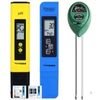
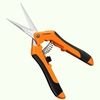



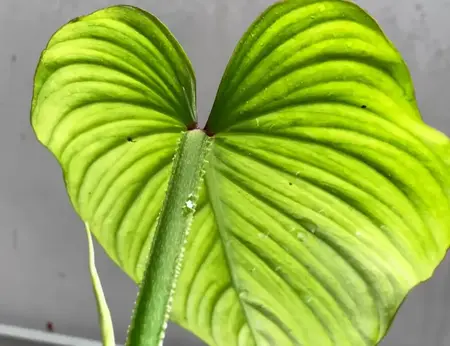
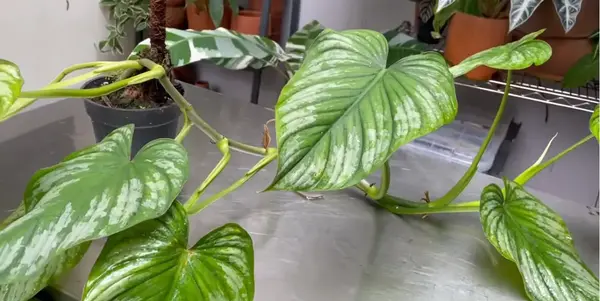
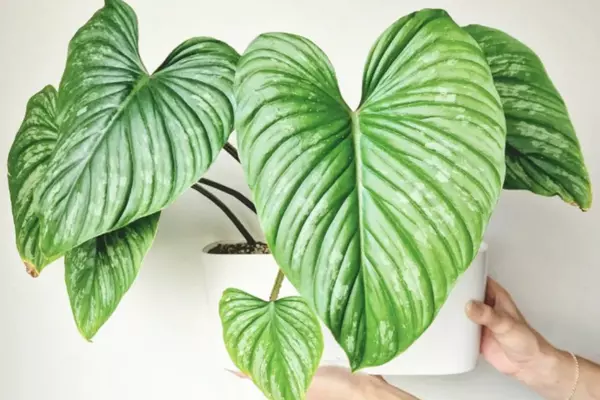
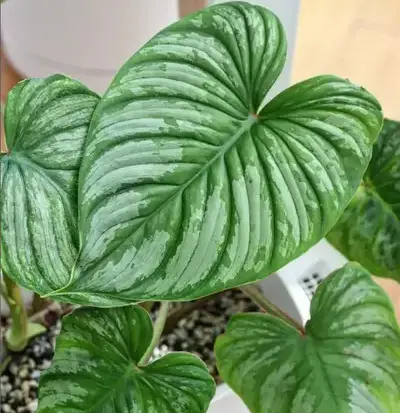
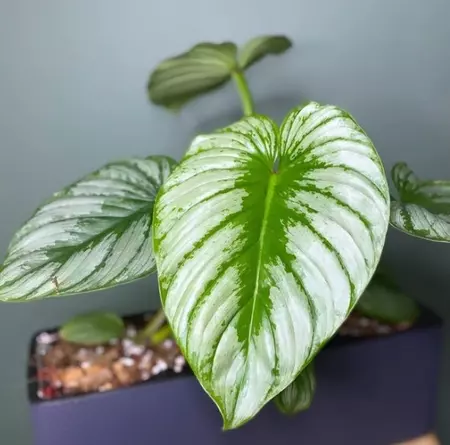

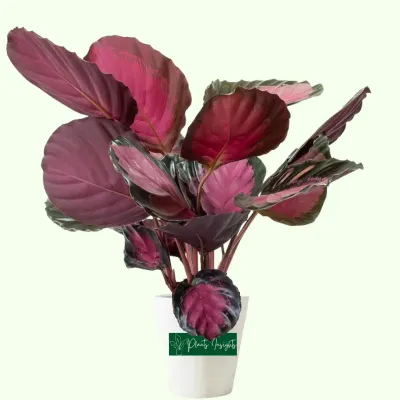
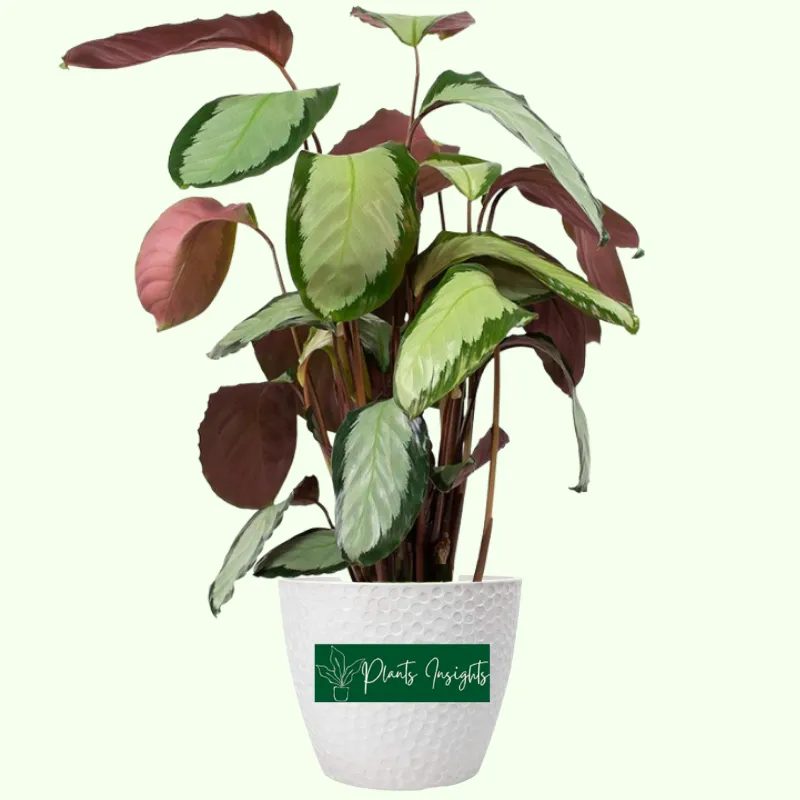
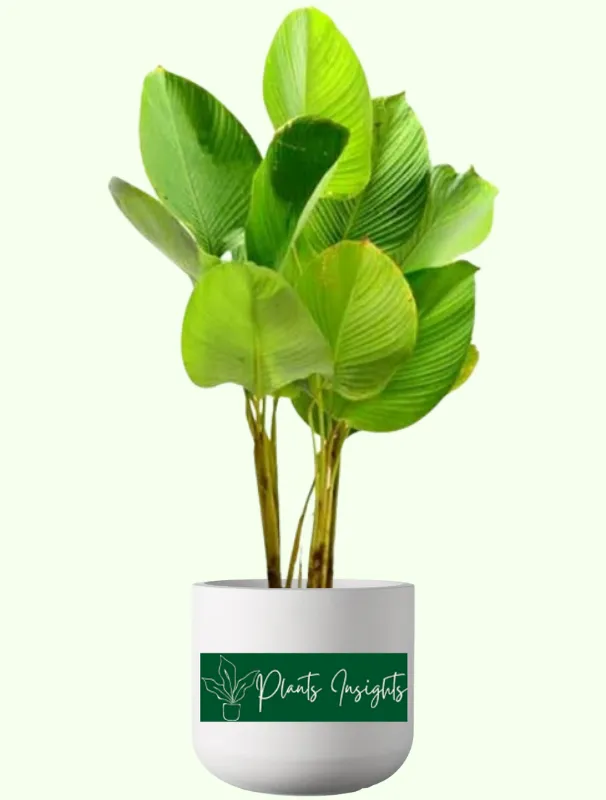
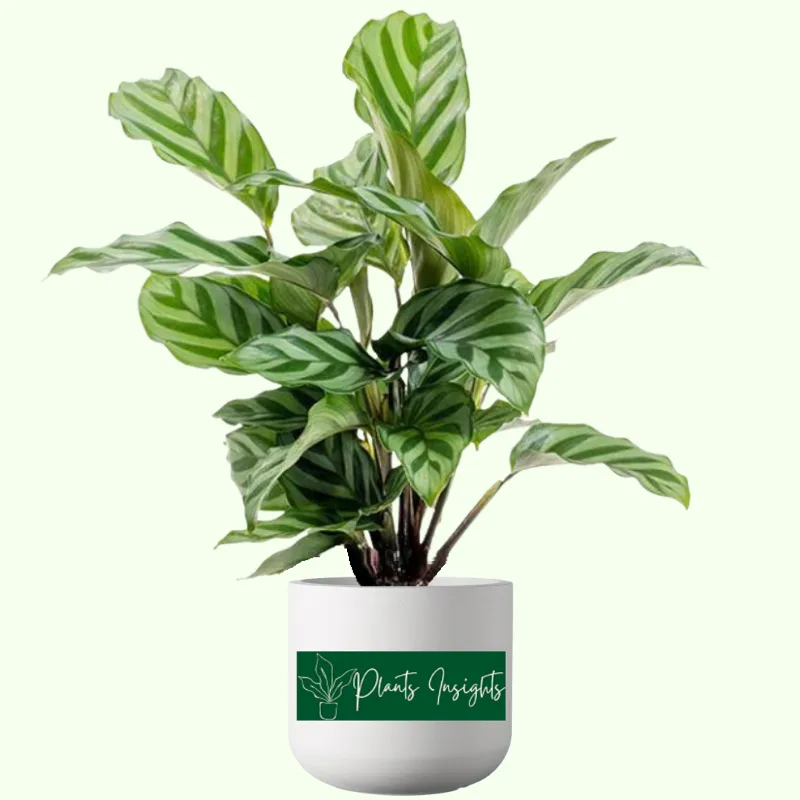
I consider something genuinely interesting about your site so I saved to bookmarks.